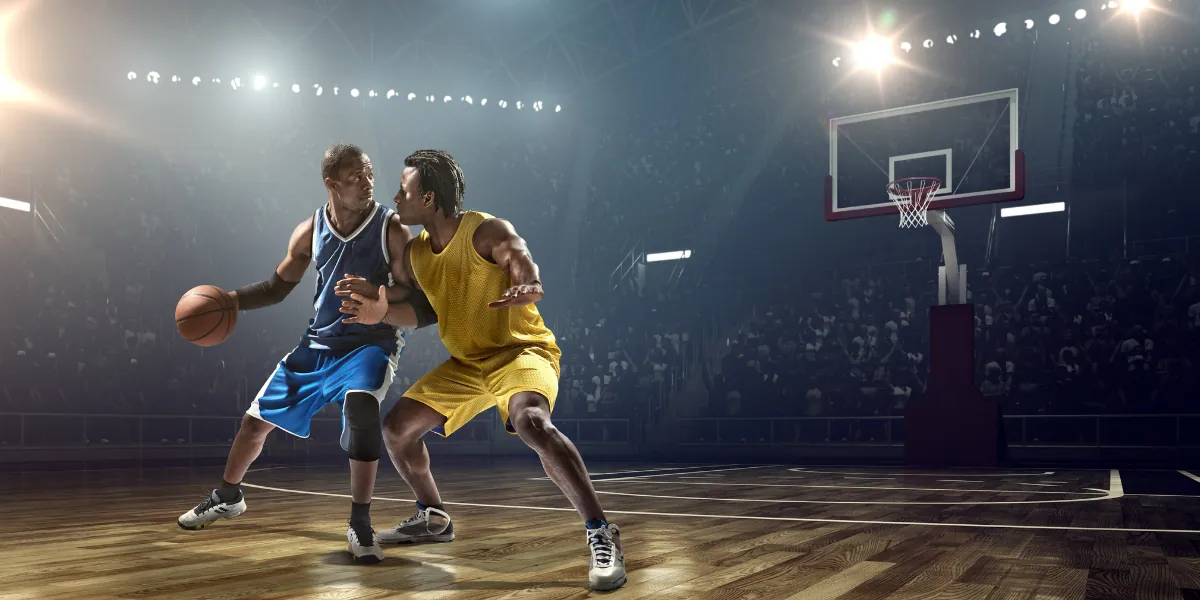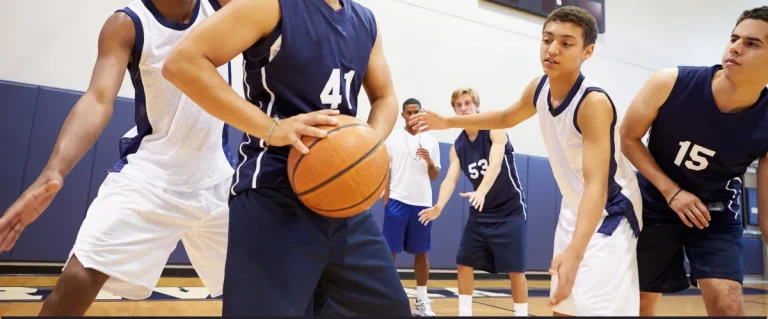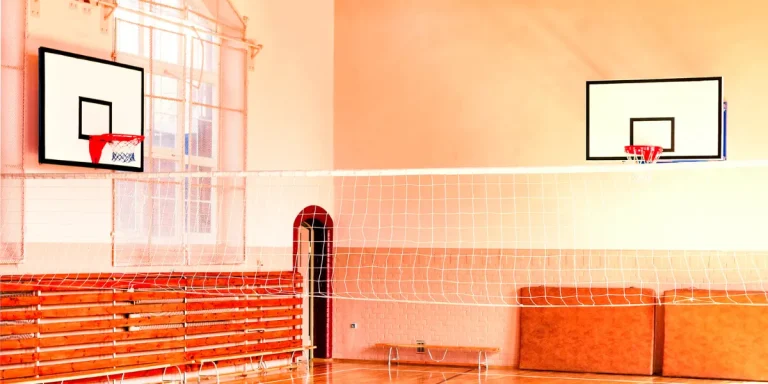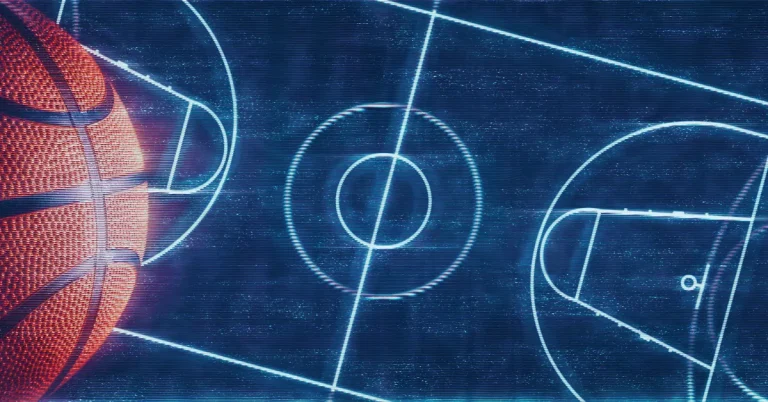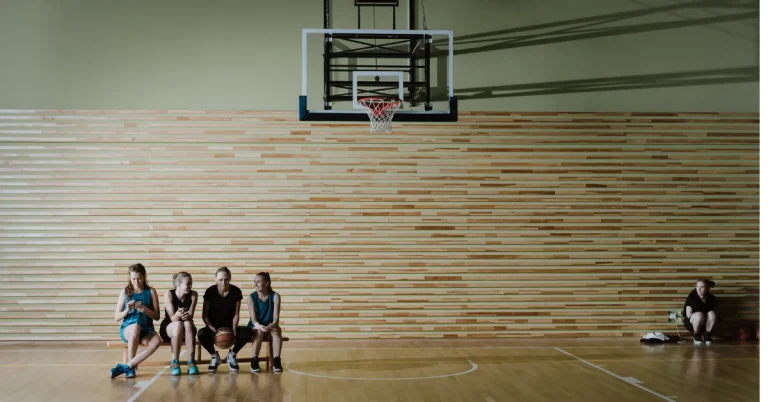Is Basketball a Contact Sport?
Basketball, a game of speed and strategy, often prompts questions about its physical nature. “Is basketball a contact sport?” This exploration begins by defining what makes a sport ‘contact’ and addressing how people perceive the physical side of basketball.
Imagine watching a game—players swiftly moving, bodies colliding, the court alive with action. From personal experiences, I’ve realized that physicality is inherent in the game. Let’s uncover the essence of basketball’s contact dynamics by understanding the rules, player views, and more. Join me in demystifying the physical side of this exciting sport.
Why is basketball not commonly considered a contact sport?
Have you ever wondered why basketball isn’t considered a contact sport? The answer lies in the game’s emphasis on skill, teamwork, and scoring, rather than deliberate physical clashes. Unlike sports, where bumping into opponents is part of the strategy, basketball focuses more on controlled moves and coordination. Although some physical contact is unavoidable, it’s not the main feature of the game. Rules also discourage aggressive contact, highlighting why basketball is often viewed as a sport with less rough play compared to others.
Common Injuries in Basketball – Causes & Symptoms
Basketball, a sport of agility and intense physicality, often exposes players to the risk of injuries. Understanding these common injuries is crucial for both players and enthusiasts to promote preventive measures and ensure a safer playing environment. In this detailed exploration, we’ll delve into six prevalent injuries in basketball, shedding light on their causes, symptoms, and recommended approaches for recovery.

Ankle Sprains
Causes: Sudden changes in direction, landing awkwardly after a jump, or colliding with another player.
Symptoms: Pain, swelling, and difficulty putting weight on the affected ankle.
Prevention: Proper warm-up, ankle-strengthening exercises, and wearing supportive footwear.
Knee Injuries (ACL Tears)
Causes: Sudden stops, changes in direction, or abrupt turns, putting excessive strain on the anterior cruciate ligament (ACL).
Symptoms: Swelling, instability in the knee, and a popping sensation at the time of injury.
Prevention: Strengthening exercises, maintaining proper form during movements, and using supportive gear for knees.
Dislocated Shoulders
Causes: Forceful collisions, falls, or strong contact with another player.
Symptoms: Severe pain, visible deformity in the shoulder joint, and limited range of motion.
Prevention: Developing shoulder strength through targeted exercises and maintaining awareness of surroundings on the court.
High Ankle Sprains
Causes: Excessive rotational forces on the ankle, often resulting from abrupt directional changes.
Symptoms: Pain and swelling above the ankle, along with difficulty moving the foot.
Prevention: Balance and proprioception exercises, along with proper footwear.
Plantar Fasciitis
Causes: Overuse or repetitive stress on the plantar fascia ligament, commonly from frequent running and jumping.
Symptoms: Heel pain, especially in the morning or after periods of inactivity.
Prevention: Stretching exercises for the calf and foot, wearing supportive shoes, and avoiding overtraining.
Jammed Fingers
Causes: Forceful impact on outstretched fingers, often when attempting to catch a fast-moving ball.
Symptoms: Immediate pain, swelling, and difficulty bending the affected fingers.
Prevention: Practicing proper catching techniques, using finger splints, and wearing protective gear.
Understanding the intricacies of these common injuries empowers players to take proactive measures, enhancing both their performance and overall well-being on the basketball court.
Official Basketball Fouls
Basketball, a dynamic sport, follows official basic rules for fairness and safety. Key aspects include foul definitions and types, crucial for players, referees, and enthusiasts.
Personal Foul: A personal foul is committed when a player challenges another player unfairly, such as by blocking their run, making excessive physical contact, or impeding their progress.
Technical Foul: Technical fouls are non-contact violations, typically involving unsportsmanlike behavior, disrespectful actions, or infractions related to the game’s administration rather than direct player-to-player contact.
Flagrant Foul: A flagrant foul involves excessive or violent contact that goes beyond the norm of regular gameplay. It is considered more severe than a personal foul and may result in ejection from the game.
Shooting Foul: When a defender makes illegal physical contact with an offensive player during a scoring attempt, it is deemed a shooting foul. The fouled player is awarded free throws based on the situation.
Common Types of Contact
Basketball, known for its dynamic and physical nature, features diverse player contact. Essential for players and enthusiasts, we’ll explore common types, revealing their impact on the game’s dynamics.
1. Body-to-Body Contact: During intense gameplay, players often experience body-to-body contact. This happens when they come into direct physical contact with each other, whether it’s while jostling for position, setting screens, or competing for rebounds. Body-to-body contact is a fundamental aspect of the game, testing players’ strength, balance, and ability to hold their ground. It often contributes to the physical intensity that characterizes basketball.
2. Charging: Charging happens when an offensive player with the ball makes significant physical contact with a defensive player who has established a stable position. Charging is a strategic defensive move to draw offensive fouls, emphasizing the importance of positional awareness and timing.
3. Blocking: Blocking involves a defensive player using their body to impede the progress of an offensive player with the ball, usually during a shot attempt. Successfully executed blocks can shift momentum, demoralize opponents, and serve as a defensive highlight. However, mistimed blocks can result in fouls.
4. Reaching Foul: It occurs when a defensive player extends their arm(s) to hinder an offensive player’s movement or attempts to steal the ball. While reaching can disrupt the opposing team’s plays, it also carries the risk of fouls. Skilled defenders balance aggression with discipline to avoid unnecessary fouls.
5. Hand-checking: Hand-checking involves a defender using their hands to impede the progress of an offensive player. It was more prevalent in the past but has become restricted by rule changes. Hand-checking, when allowed, adds a physical element to defense. However, it requires finesse to avoid drawing fouls.
6. Screen Setting: Setting screens involves an offensive player using their body to block or shield a teammate’s defender, creating opportunities for the ball handler. Screens are a vital part of offensive strategy, requiring teamwork and precise timing. Well-executed screens can lead to open shots and scoring opportunities.
Basketball Comparisons with Other Sports
Basketball is a fast and dynamic game with some contact, but it’s not as rough as football, which has a lot more physical interaction. The nature of contact in basketball is regulated through fouls, focusing on fair competition and strategic maneuvers. While players exhibit physicality, the sport places a premium on agility, precise movements, and skillful gameplay.
When comparing basketball to high-contact sports, such as rugby or ice hockey, the controlled contact in basketball becomes evident. While physical play is integral, it strikes a balance, making basketball a captivating sport that combines athleticism, strategy, and skill. This middle ground allows for a dynamic and less physically demanding experience, appealing to a broad audience globally.
FAQs
How is contact managed in professional basketball leagues?
Professional leagues have referees who enforce contact rules. Players committing fouls may face penalties, and repeated offenses can lead to disqualification from the game.
Do basketball players wear protective gear for contact?
Unlike high-contact sports, basketball players wear minimal protective gear. The focus is on freedom of movement, with players typically wearing jerseys, shorts, and lightweight footwear.
Can controlled contact enhance the excitement of basketball?
Yes, controlled contact is an integral part of basketball’s appeal. It adds an element of unpredictability, making the game exciting and contributing to its global popularity.
What is contact in basketball?
Contact in basketball refers to physical interactions between players during gameplay, including pushing, bumping, and body contact, regulated by rules for fair play and player safety.
Conclusion
Basketball is a contact sport that fosters physicality, teamwork, and skill development. Embracing its contact nature enhances players’ resilience, communication, and strategic thinking. Incorporating this keyword into content highlights its significance, attracting audiences seeking insights into basketball’s dynamic and rewarding experience.

Passionate basketball player striving for excellence on and off the court. Dedicated to the game since youth, I have honed skills through years of practice. Explore my journey, gear reviews, and dunking tips. Let’s elevate our game together!

